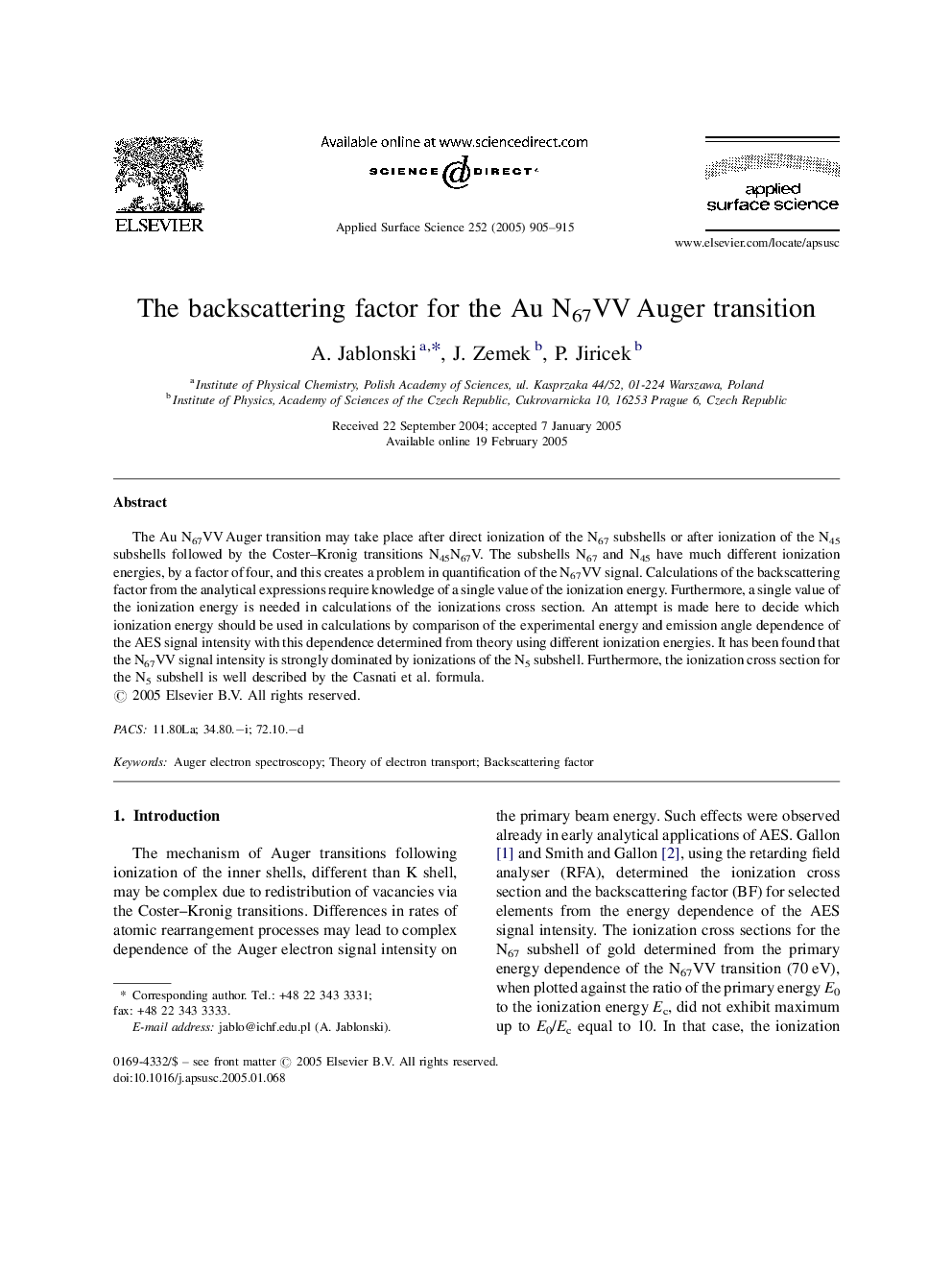| Article ID | Journal | Published Year | Pages | File Type |
|---|---|---|---|---|
| 9566692 | Applied Surface Science | 2005 | 11 Pages |
Abstract
The Au N67VV Auger transition may take place after direct ionization of the N67 subshells or after ionization of the N45 subshells followed by the Coster-Kronig transitions N45N67V. The subshells N67 and N45 have much different ionization energies, by a factor of four, and this creates a problem in quantification of the N67VV signal. Calculations of the backscattering factor from the analytical expressions require knowledge of a single value of the ionization energy. Furthermore, a single value of the ionization energy is needed in calculations of the ionizations cross section. An attempt is made here to decide which ionization energy should be used in calculations by comparison of the experimental energy and emission angle dependence of the AES signal intensity with this dependence determined from theory using different ionization energies. It has been found that the N67VV signal intensity is strongly dominated by ionizations of the N5 subshell. Furthermore, the ionization cross section for the N5 subshell is well described by the Casnati et al. formula.
Related Topics
Physical Sciences and Engineering
Chemistry
Physical and Theoretical Chemistry
Authors
A. Jablonski, J. Zemek, P. Jiricek,
